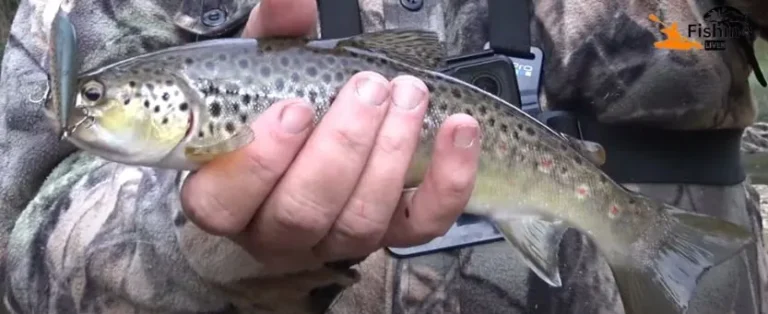Can You Eat Largemouth Bass? Culinary Insights

Largemouth bass, scientifically known as Micropterus salmoides.
Largemouth bass are a popular freshwater game fish in North America Known for their aggressive strikes and fighting ability, largemouth bass is a prized catch among anglers.
However, a common question among fishing enthusiasts is whether you can eat largemouth bass? The answer is yes, you absolutely can eat largemouth bass.
Here’s a dive into whether you can eat largemouth bass, exploring various factors, including regulations, health considerations, and culinary aspects.
Taste and Quality
Flavor
Some compare bass to crappie or bluegill because of its mild, slightly sweet flavor.
Largemouth bass often tastes like freshwater species. Its flavor is influenced by water quality and diet. If largemouth bass is cooked correctly, its flavor can be enhanced.
In addition to grilling, pan-searing, baking, and frying, largemouth bass has a firm texture suitable for various culinary preparations.
Largemouth bass offers a delicious dining experience for seafood lovers.
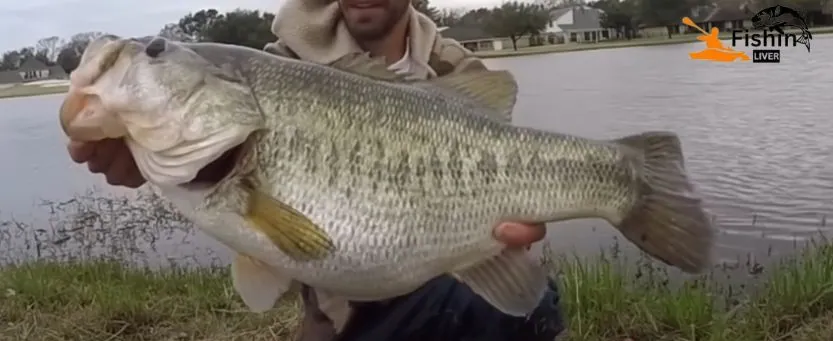
Edibility
It can be eaten as part of a healthy diet, as a largemouth bass is edible. When cooked properly, largemouth bass can be delicious.
White flesh and mild flavor make it an excellent choice for various cooking methods and seasonings.
Catch largemouth bass fresh so that it is delicious when cooked.
Largemouth bass can provide a tasty and nutritious meal for seafood lovers.
However, it’s important to be mindful of factors such as fishing regulations, and proper cooking methods to ensure the safety and quality of the fish.
Factors affecting taste
Water quality affects the taste of bass. Clean, flowing water tends to produce sweeter and less fishy bass.
On the other hand, muddy or grassy tastes can be imparted by stagnant or polluted waters.
Season also plays an important role in the taste of bass. Bass is often considered the best food during the colder months.
Raw Bass
The risk of parasites and bacteria makes largemouth bass unsuitable for raw consumption.
Some fish species are commonly consumed raw in dishes such as sushi.
Consuming raw largemouth bass can lead to foodborne illnesses. Therefore, it’s not recommended to eat largemouth bass raw.
Preparation is key
Like any fish, proper cleaning and cooking techniques are essential for Largemouth bass to bring out the best flavor and texture.
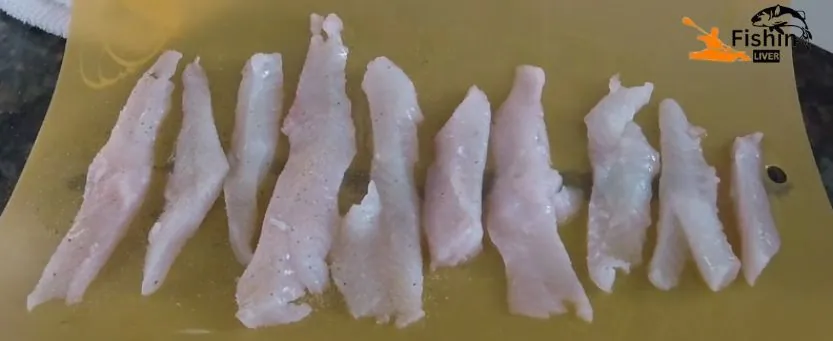
Nutritional value
Largemouth bass are valued for taste as well as nutrition. The nutrients found in largemouth bass meat include 110 Calories, Protein, Fat, Cholesterol, Vitamin B12, Mineral, and Other Nutrients.
Protein: Largemouth bass is an excellent source of high-quality protein and essential for building and repairing tissues in the body.
Fat: Largemouth bass is relatively low in fat content, including healthy omega-3 fatty acids, which are beneficial for heart health.
Cholesterol: Largemouth bass contains cholesterol; individuals with specific dietary restrictions or health conditions may need to monitor their cholesterol intake.
Vitamins: Largemouth bass is a good source of various vitamins, including:
Vitamin B12, Niacin (Vitamin B3) for skin health, and Vitamin B6(for brain development), Vitamin D (bone health).
Minerals: Largemouth bass provides essential minerals such as Selenium, Phosphorus, Potassium, and Magnesium.
Other Nutrients: Additionally, largemouth bass is a good source of iron, zinc, and copper, all essential for the body’s physiological functions.
Health Considerations
Largemouth bass, like many other fish species, can accumulate environmental contaminants such as mercury and other pollutants.
Consuming large quantities of these contaminants, especially by pregnant women, nursing mothers, and children, can pose health risks. Health experts recommend practicing moderation.
Additionally, certain cooking methods can help reduce exposure to contaminants.
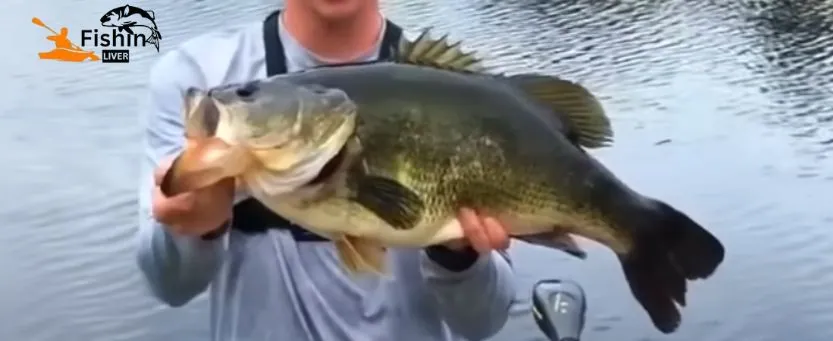
Tips for cooking bass
Regarding culinary aspects, largemouth bass can be a flavorful and versatile ingredient.
Its firm, white flesh lends itself well to various cooking methods, including grilling, frying, baking, and pan-searing.
Largemouth bass has a slightly sweet flavor that pairs nicely with various seasonings.
For those interested in How to cook largemouth bass, here are a few culinary tips:
Freshness: Largemouth bass freshness is crucial for the best flavor and texture.
If you’re catching largemouth bass, cook it as soon as possible.
Cleaning: Clean your bass. Remove the gills and guts, and thoroughly rinse the flesh.
Skinning: You can cook bass with the skin. Skinning can help reduce any strong, fishy flavors.
Cooking methods
Bass can be prepared with baking, broiling, frying, or grilling. Avoid overcooking the Largemouth bass, as it can cause the flesh to become dry and lose its flavor. Here are some methods to cook largemouth bass:
Grilling
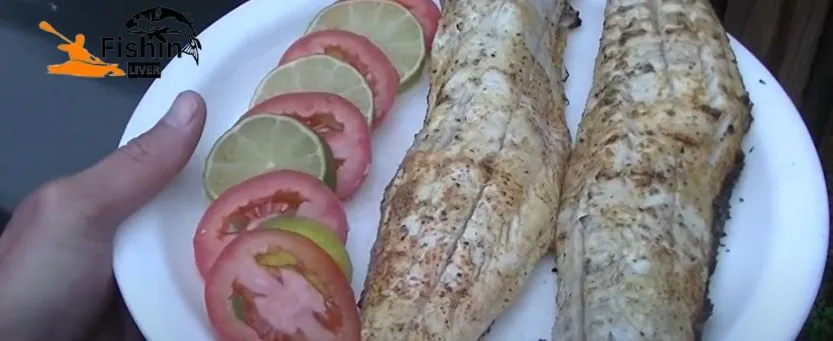
Grilling imparts a smoky flavor while keeping the fish moist. Marinate the bass with herbs, then grill over medium-high heat for about 4-6 minutes per side, depending on the thickness of the fillets. Serve the grilled largemouth bass with a fresh salad.
Pan-Searing
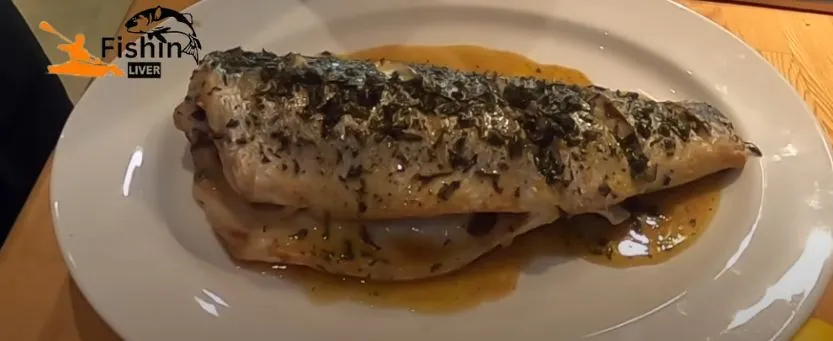
Pan-searing is a quick and easy way to cook largemouth bass. Heat a skillet with oil over medium-high heat, then place the bass fillets skin-side down.
Cook for 3-4 minutes until the skin is crispy, then flip and cook for an additional 2-3 minutes until the flesh is opaque and flakes easily with a fork. Serve with your favorite side dishes.
Baking
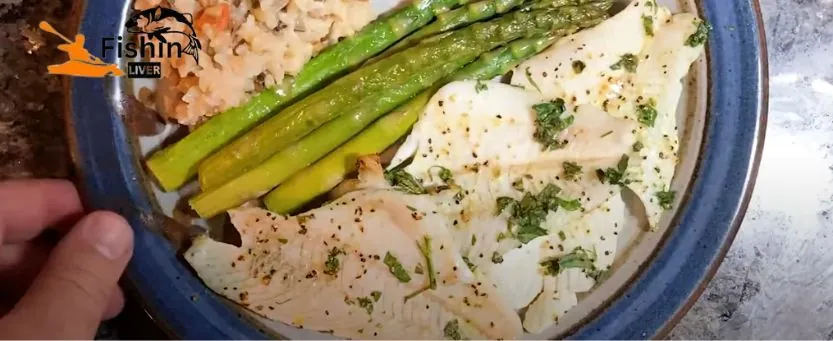
Baking a largemouth bass preserves its delicate flavor. Preheat the oven to 375°F (190°C), season the bass fillets with salt and pepper, then place them on a baking sheet lined with parchment paper.
Fish should be cooked through and flaky after 12-15 minutes in the oven.
Serve with roasted potatoes and steamed vegetables.
Frying
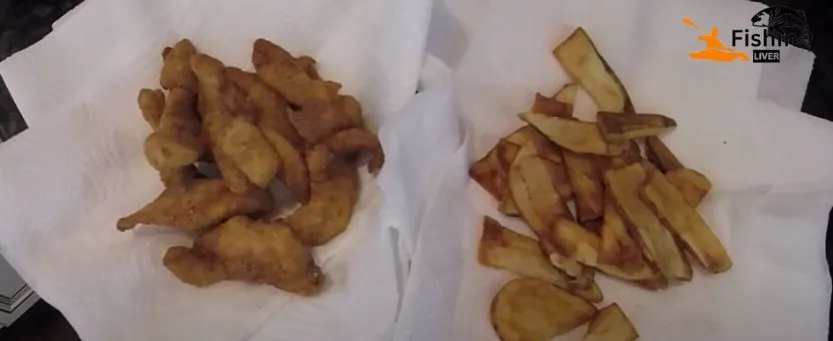
Fry largemouth bass results in crispy, golden-brown fillets. Season bass fillets in flour or breadcrumbs, then shallow fry them for 3-4 minutes per side in hot oil until golden and cooked through. Serve with tartar sauce and coleslaw.
Conclusion
Adding largemouth bass to your menu can be a tasty and rewarding experience.
If you want to enjoy delicious largemouth bass, you must follow all these tips.
Considering all these factors, you can eat largemouth bass and add a great dish to your dinner.
When caught responsibly, prepared thoughtfully, and consumed in moderation, largemouth bass can offer a delicious dining experience for food lovers alike.
So grab your gear, go on a fishing adventure, and enjoy the prized catch of largemouth bass.
With the largemouth bass taste, your good eating memories are enhanced, and you spend your precious time with your family while eating largemouth bass for dinner.
“Explore our comprehensive guide on Can You Eat Shark to enhance your angling skills and discover more tips and techniques.”


